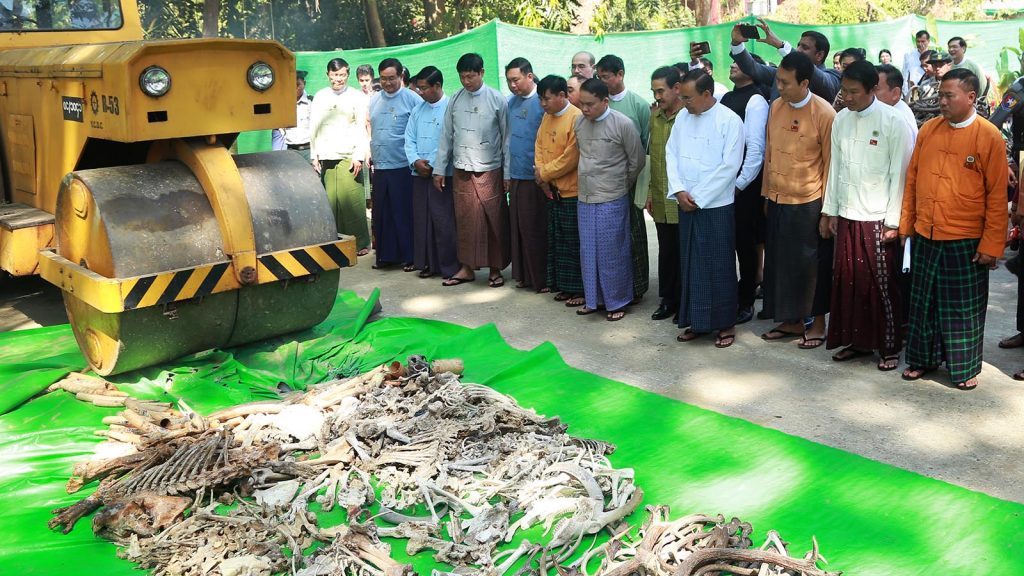4 March
An Elephant Museum was opened with the aim of reducing the elephant-human conflict, said Union Minister for Natural Resources and Environmental Conservation U Ohn Win in Yangon yesterday.
Speaking at the opening ceremony of the museum, where seized ivory, elephant parts and wildlife parts were also destroyed, the Union Minister said the museum was the first of its kind in Myanmar, and it was opened as a gesture hailing the World Wildlife Day.
He then elaborated on the other goals: the protection of wildlife in their habitats, greater public awareness and involvement in eliminating of wild elephant poaching and trafficking in elephants and their parts, broader knowledge of the tamed elephant management, the nature of elephants and the relation between men and the world’s largest land mammals.
Million-year old fossils of elephant-like mammals, a pair of ivory of finest quality, equipment including radio collars and trap cameras, crafts made of ivory and elephant bones that are barred from trading, a complete set of an elephant’s skeleton and rate items such as the black ivory are on display at the museum.
Although many items are prohibited from touching, the museum lets the handling of some items for educational purpose, he said.
The Union Minister and officials formally opened the museum at the Natural History Museum, and visited the booths. He also delivered address at the second destruction of seized ivory, elephant parts and wildlife parts, held for the wider public awareness of the global rise in poaching and trafficking of animals such as tigers, elephants, gaurs, pangolins and golden dears, and the public involvement in wildlife protection and conservation.
The first destruction was held in Nay Pyi Taw on 4 October 2018. At the current ceremony, illegal wildlife products will be crushed into pieces. The value of the annual worldwide wildlife trafficking is between US$ 20 billion and US$ 30 billion, which stands as the fourth largest illegal trade after drug trafficking, counterfeiting and trafficking in persons.
At the ceremony, 219 pieces of ivory, 527 bone sections of tigers and leopards, 800 horns of various animals, 134.72 kilos of pangolin scales, 5.5 kilos of turtle shells and dried elephant trunks, valued at K 1700 million or USD 1.1 million were destroyed.
Present at the ceremony were Chief Minister of Yangon Region U Phyo Min Thein, regional cabinet members, MPs of the two houses, diplomats, representatives of the embassies, officials of the Ministry of Natural Resources and Environmental Conservation, resident representatives of UN agencies, representatives of NGOs, sister organizations, staff of Forest Department and guests.—MNA (Translation:TMT)


